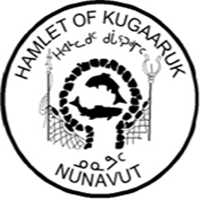ICSP Toolkit
About Kugaaruk

Located at N68 24' W89 43' on the southwest shore of the Simpson Peninsula, Kugaaruk (or Pelly Bay as it was previously known), has been known for generations amongst the Inuit as excellent seal hunting grounds. It is on the east side of Pelly Bay at the mouth of the Peter River, southeast of Taloyoak and northwest of Repulse Bay.
In 1968, the Canadian government transported thirty-two prefabricated houses into Kugaaruk. Until then, the Arviligjuaqmiut lived a semi-nomadic lifestyle. Small family groups, living in igluit (igloos) and skin tents, followed the caribou that sustained them. Occasionally, groups would come together to hunt and fish. In 1937, when the Catholic mission was established here, groups would meet for Christmas celebrations at Kugaarjuk (the mouth of the Kugajuk River), then separate again to pursue their nomadic cycle.
The first Catholic missionary, Father Pierre Henri, arrived in 1935. He built a small stone chapel/house, but soon learned that stone wasn't a good insulator in this harsh climate. Instead, he adopted Inuit ways, living in an igloo and wearing traditional Inuit clothing during the cold months. He and Father Franz Van de Velde, who remained a powerful force in the community until 1965, built the stone church in 1941. The Hamlet received a government grant to restore the deteriorating church as a historic site.
Until 1955, when the DEW (Distant Early Warning) Line construction began, resident had almost no contact with the outside world. In 1829, English explorer John Ross camped nearby, but no whalers or Hudson's Bay Co. trading post ever came to Kugaaruk. Ice jams around the islands guarding the bay's mouth made access almost impossible.
Population : 975

